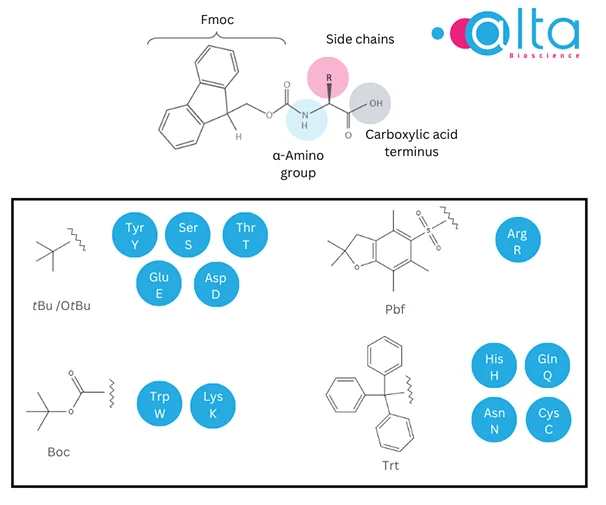Peptide Oligonucleotide Conjugates for Life Science Research
Leveraging our extensive expertise in both oligo and peptide synthesis, we are pleased to provide custom production of peptide oligonucleotide conjugates with industry-leading turnaround times.
We offer a wide range of modifications allowing the peptide and oligonucleotide constructs to be specifically tailored to your requirements. Depending on the peptide and oligonucleotide sequences, our experts will advise on the best conjugation strategies.
Also, we place a great emphasis on the quality of our products. Our peptides are HPLC purified to the desired purity and the final conjugate by desalting methods. We also perform QC analysis by mass spectrometry to give you full confidence in our products.
What are peptide oligonucleotide conjugates?
Peptide conjugation to oligos via an heterobifunctional linker generates peptide oligo conjugates (also known as POCs or DNA peptide conjugates). The association of these two distinct constructs is highly advantageous. Indeed, it allows not only the retention of the individual properties of the parent molecules, but also to broaden their applications by enhancing them with additional unique properties.
In addition, the possibility to tailor their structures to match specific experimental needs makes them invaluable research tools to advance our understanding of biological processes and for the development of promising therapeutics and diagnostic applications.
Peptides moieties in POCs
Peptides are short chains of amino acids, which are the building blocks of proteins. They can vary in length but are typically less than 50 amino acids long. Since the pioneering work of Bruce Merrifield in the 60s, peptides can be rapidly synthesised by solid-phase synthesis. Although they are only 20 proteinogenic amino acids, the development of unnatural amino acids and innovative peptide chemistries have enabled the design and synthesis of a plethora of highly versatile molecules with interesting properties.
In particular, cell-penetrating peptides (CCPs), also known as protein transduction domains, are short cationic and/or amphipathic peptides. They have the ability to penetrate cell membranes and facilitate the intracellular delivery of a wide range of cargos, including drugs, proteins, and nucleic acids into cells. CPPs are often used in conjunction with oligos, and as for any peptides, we can provide a range of modifications including (but not limited to):
- Dyes (FAM, TAMRA)
- Biotinylation
- Spacers
- Modified amino acids incorporated in the peptide sequence
- Acetylation, phosphorylation and methylation
Oligonucleotides moieties in POCs
Oligos are single-stranded DNA or RNA sequences, which like peptides, can be manufactured by solid-phase synthesis. They are able to recognise and bind selectively to their complementary sequences and, due to this property, have been exploited in many biological applications. For instance, they are used as primers in polymerase chain reaction (PCR), as probes in cellular assays, in knock-out studies or as antisense oligonucleotides (ASOs) in therapeutic applications.
Like peptides, they can be synthesised with a wide range of scales and modifications, including:
- Phosphorothioate linkage on the backbone of the oligonucleotide molecule
- Modified bases on the oligonucleotide
- Dye Labelling (TAMRA, BHQ1 and BHQ2)
- Biotinylation

Why use POCs?
The applications of oligos in life science research are vast. However, free oligos face many challenges including issues with intracellular uptake, cell or tissue specificity, and high clearance in the body. There are many strategies that can be adopted to overcome these difficulties, including the chemical modifications of the nucleic acid backbone, the ribose sugar moiety and the nucleobases. Alternatively, conjugation of the oligos to other moieties, such as peptides, has been successfully employed in order to improve their cellular internalisation, stability and targeting specificity.
For more information, contact our team at info@altabioscience.com to discuss your project needs.
References
Klabenkova K, Fokina A, Stetsenko D. Chemistry of Peptide-Oligonucleotide Conjugates: A Review. Molecules. 2021 Sep 6;26(17):5420. doi: 10.3390/molecules26175420. PMID: 34500849; PMCID: PMC8434111.
Roberts, T.C., Langer, R. & Wood, M.J.A. Advances in oligonucleotide drug delivery. Nat Rev Drug Discov 19, 673–694 (2020). doi: 10.1038/s41573-020-0075-7



